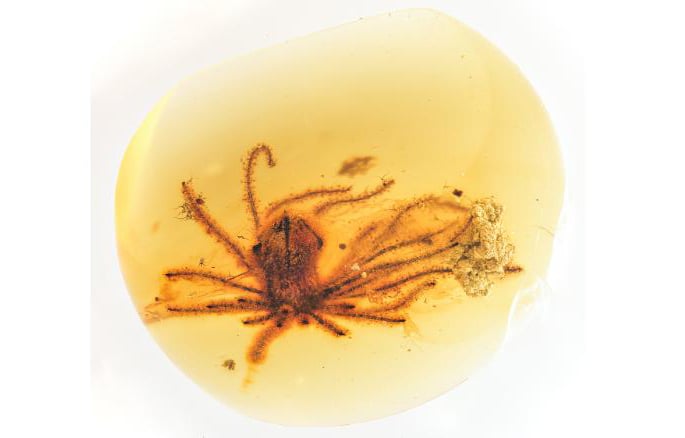
A group of ancient flowers was discovered in present-day Myanmar perfectly preserved in amber.
The study’s findings indicate that certain flowering plants have remained unchanged for almost 100 million years, as suggested by the observed characteristics of the flowers.
Ancient flower specimens are notoriously hard to come by due to the ephemeral nature of a flower’s life. Flowers mature, become fruit, and then die–due to the fragile form they are often lost or destroyed rather than fossilized. Charles Darwin considered the evolution of flowering plants to be one of the most bizarre narratives in natural history, calling them “an abominable mystery.”
“Leaves are generally produced in larger numbers than flowers and are much more robust; they have a higher preservation potential. A leaf is discarded ‘as is’ at the end of its useful life, while a flower transforms into a fruit, which then gets eaten or disintegrates as part of the seed dispersal process,” study author Robert Spicer, a professor emeritus in the School of Environment, Earth and Ecosystem Sciences at The Open University in the United Kingdom, told CNN.
The evolution of flowers is considered pivotal to the growth of life on Earth, helping to diversify different species of insects, mammals, amphibians, and birds, introducing a major shift where life above ground was more differentiated than that of the sea, the study says.
“Flowering plants reproduce more quickly than other plants, have more complex breeding mechanisms, a wide variety of flower forms, for example, often in close ‘collaboration’ with pollinators. This drives mutual coevolution of many lineages of plants and animals, shaping ecosystems,” Spicer said.
The researchers have named one of the persevered flowers Eophylica priscatellata and the other Phylica piloburmensis, the latter being a genus native to present-day South Africa.
🎄🎅 For #FossilFriday an exceptionally well preserved Cretaceous 5-sepal flower in 99Myo amber from Myanmar.
It’s closest living relative is the🇦🇺Christmas bush Ceratopetalum gummiferum 💕 pic.twitter.com/QGB7NIZDFn— Dr Joseph Bevitt (@Joseph_Bevitt) December 27, 2019
99 million-year-old flowers shed light on ancient mystery of evolution
Darwin was stumped by the inexplicable emergence of flowering plants in the Cretaceous period which occurred 145 million to 66 million years ago. Scientists still have not determined the precise origin of flowering plants, but Spicer says that the preserved flowers have revealed new information.
The specimens have qualities identical to flowers that thrive in flammable areas, like the fynbos regions of South Africa. The Phylica species are native to this area and have also been found by amber preserving semi-burned plants.
“Here we have preserved in amber all the details of one such early flower just at the time when flowering plants begin to spread across the globe, and it shows superb adaptation to seasonally dry environments that supports vegetation exposed to frequent wildfires,” Spicer said.
“If many of the early flowers were exposed to fires in such semi-arid landscapes, it explains why the early phases of angiosperm evolution are so poorly represented in the fossil record–fossil(s) do not normally form in such semi-dry environments,” he explained.